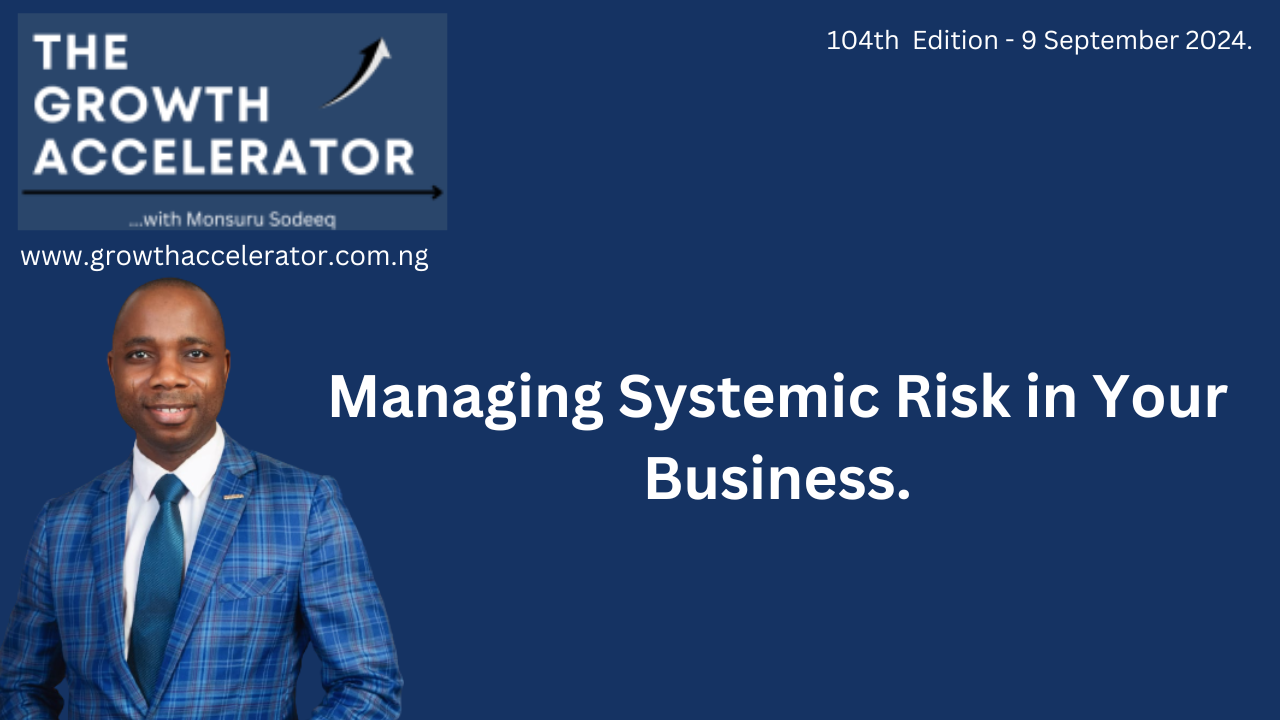Much like in life, success in business is rarely a straight path. Our ability to foresee obstacles and navigate challenges effectively shapes it. One of the greatest threats to long-term business success that is often overlooked is systemic risk.
In business, systemic risk can be compared to an invisible storm — building slowly, unnoticed, until it suddenly disrupts your operations, finances, and growth. This risk is not isolated to a single part of your business but spreads throughout the system. It is deeply embedded in your processes, supply chains, and industry.
Consider the unexpected events that can ripple through your industry — global supply chain disruptions, economic downturns, or technological shifts that render existing business models obsolete. These are risks that no single decision can entirely avoid. Instead, your preparedness and awareness keep you ahead of the curve.
How Big Brands Manage Systemic Risk
Some of the world’s largest and most successful brands have faced significant risks, and their strategies for managing those risks can serve as valuable lessons for all businesses:
Apple: Diversifying Suppliers
Apple’s global supply chain is one of the most complex in the world, which exposes the company to significant systemic risks. Apple does not rely on a single supplier for its components to mitigate this. Instead, it builds relationships with multiple manufacturers in different regions. This diversification allows Apple to continue production even when geopolitical tensions, natural disasters, or financial crises disrupt one part of its supply chain. For example, during the COVID-19 pandemic, Apple shifted production and leveraged its diversified supplier network to minimize delays.
Coca-Cola: Hedging Against Currency Fluctuations
As a multinational company operating in over 200 countries, Coca-Cola faces the challenge of fluctuating exchange rates. This is a form of systemic risk that can impact profitability if not carefully managed. Coca-Cola hedges against currency risk using financial instruments to lock in exchange rates. By doing this, they protect their profit margins from sudden currency shifts. The company also adjusts its pricing in different regions to account for local economic conditions, ensuring that no single market’s currency changes can drastically affect its global business.
Amazon: Investing in Technology and Data
The e-commerce giant Amazon has built resilience by investing heavily in technology and data analytics. One of the vital systemic risks in e-commerce is logistical inefficiency. Amazon uses predictive algorithms to forecast demand, optimize inventory, and streamline delivery to address this. By doing so, they reduce the impact of potential disruptions, such as supply chain slowdowns or unexpected shifts in consumer demand. Amazon also invested in its delivery network (Amazon Logistics), reducing dependence on external couriers and gaining more control over its operations.
How to Identify and Manage Systemic Risk
While these examples come from large corporations, the principles they apply are relevant to businesses of all sizes. Here are some strategies you can use to safeguard your business:
Assess the Entire Ecosystem
The first step in mitigating systemic risk is to view your business as part of a broader ecosystem. Map out your suppliers, partners, and industry trends. Consider how each element affects your operations. Ask yourself: “If this piece falters, what’s the ripple effect?”
Diversify Your Dependencies
Relying too heavily on one supplier, customer base, or product line increases your vulnerability. Just as investors diversify their portfolios to reduce financial risk, you must diversify your business processes to spread risk across different areas.
Stay Informed of External Shifts
Monitor regulation changes, economic trends, and technological advancements closely. The quicker you spot these changes, the more time you have to adapt your strategy.
Build a Contingency Plan
The most successful businesses aren’t those that avoid risk altogether but those that prepare for it. Establish contingency plans for supply chain disruptions, economic downturns, or shifts in consumer behaviour. A strong plan ensures you remain flexible and resilient when systemic risks arise.
Regularly Review Your Systems
Systemic risks tend to evolve. What once seemed like a secure process could slowly become outdated or vulnerable. Make it a habit to periodically review your operations and strategies to spot weak points and address them before they become full-blown crises.
In conclusion, foresight and adaptability are the keys to protecting your business from systemic risk. By recognizing the interconnectedness of your operations with the broader market and preparing for the unexpected, you can safeguard your business from potential disruptions. Take the time today to analyze the risks you face and build the resilience necessary to survive and thrive in uncertainty.
Stay proactive. Stay resilient.
To your continued success,
Monsuru Sodeeq
Growth Accelerator Partner
